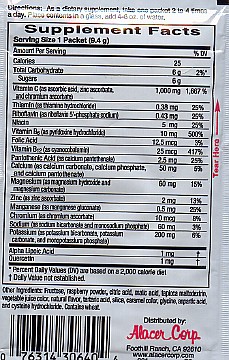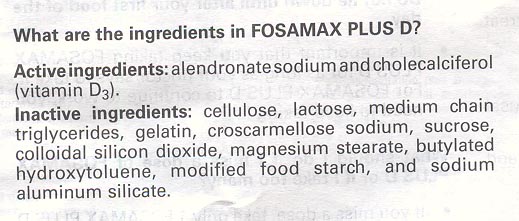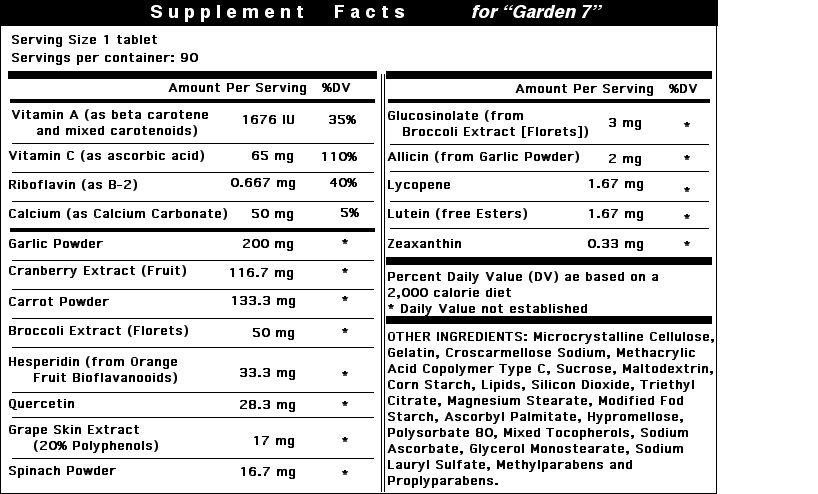When considering your intake from supplements,
also consider something people sometimes grab at the
checkout counter.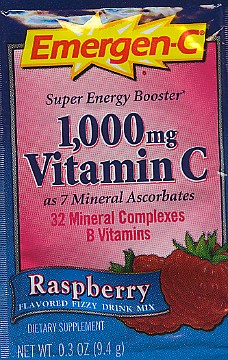 |
| Serving Size: 1 packet | % DV | |
| Vitamin C | 1,000 mg | 1,667% |
| Thiamin | 0.38 mg | 25% |
| Riboflavin | 0.43 mg | 25% |
| Niacin | 5 mg | 25% |
| Vitamin B6 | 10 mg | 500% |
| Folic Acid | 12.5 mcg | 3% |
| Vitamin B12 | 25 mcg | 417% |
| Pantothenic Acid | 2.5 mg | 25% |
| Calcium | 50 mg | 5% |
| Magnesium | 60 mg | 15% |
| Zinc | 2 mg | 13% |
| Manganese | 0.5 mg | 25% |
| Chromium | 10 mg | 8% |
| Sodium | 60 mg | 3% |
| Potassium | 200 mg | 6% |
| Alpha Lipoic Acid | 1 mg | no DV |
| Quercetin | 1 mg | no DV |
| The front of the above packet says it
has "32
mineral complexes" Many minerals aren't listed
in the above
table. That's because some of the minerals
have multiple
"complexes" listed on the label. For example the calcium in it is calcium
carbonate,
calcium phosphate and calcium pantothenate. You can click see on this to see a larger
image.
|
|
Sometimes another source of supplements is a beverage. Below is a 20-ounce bottle of a Glaceau-brand product called "Vitamin Water". Notice that the first column of the Nutrition Facts is given for an 8-ounce serving. The secomd column of the Nutrition Facts is for the whole bottle. 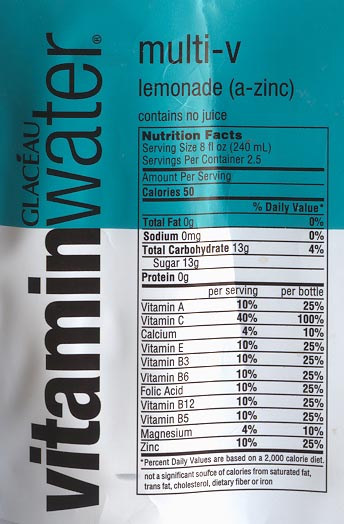 |
| Video
Clip 1: Supplements Part 1 approximately 10 minutes |
| Video
Clip 1: Supplements Part 2 approximately 8 minutes |
5. Don’t let nutrient levels exceed the Upper Intake Level.
6. Get phytochemicals from foods, not supplements. Research has shown that phytochemicals have benefits when you get them from foods, not supplements, and may even be harmful from supplements. So this goes back to guideline #4, keep formulations simple.
7. Look for the USP label when purchasing a supplement. This means that the manufacturer has paid an outside agency to test the product to affirm it contains the nutrients stated, and that it will dissolve.
